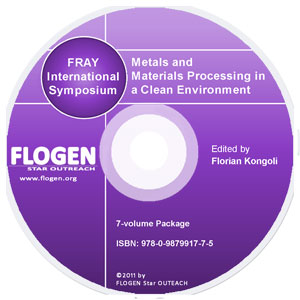
CD shopping page |
2011-Sustainable Industrial Processing Summit
|
| Editors: | Florian K |
| Publisher: | Flogen Star OUTREACH |
| Publication Year: | 2012 |
| Pages: | 646 pages |
| ISBN: | 978-0-9879917-6-8 |
| ISSN: | 2291-1227 (Metals and Materials Processing in a Clean Environment Series) |
Ceramic- Polymer Composites As Dielectric Materials
Dipak Khastgir1; SuryaKanta Nayak1; Tapan Chaki1;1IIT KHARAGPUR, Kharagpur, India;
Type of Paper: Regular
Id Paper: 407
Topic: 9
Abstract:
Ceramic and polymer both are considered as excellent dielectric materials. However ceramic materials have high density, rigidity and need very high temperature for forming. Whereas polymers are light weight, relatively flexible and easily processable at much lower temperature. But judicial combination of ceramic and polymer can give rise to excellent dielectric material with controlled dielectric properties which can be formed into any intricate shape more easily. The aim of the present work is to develop graded dielectric material from suitable ceramic- polymer composites. Polymer ceramic composites having controlled dielectric properties were prepared using elastomer like polydimethylsiloxane (PDMS), and ethylene-propylene-diene terpolymer, as matrix and neat titania (TiO2), heat treated titania, doped titania as well as barium titanate(BaTiO3) as fillers.Different mechanical and dielectric properties of these composites were measured. It is found that filler in general reduces the tensile strength and elongation at break. However the addition of these fillers was found to increase tear strength and hardness of composites. Both heat treatment and doping of titania has significant effect on electrical, mechanical and processing properties of these composites. The dielectric properties of these composites can be controlled through adjustment of filler concentration and filler treatment. With the increase in the concentration of different types of titania and barium titanate both dielectric constant and loss increase but resistivity decreases. The effect of poling through application of electric field on dielectric properties of these composites has also been investigated.